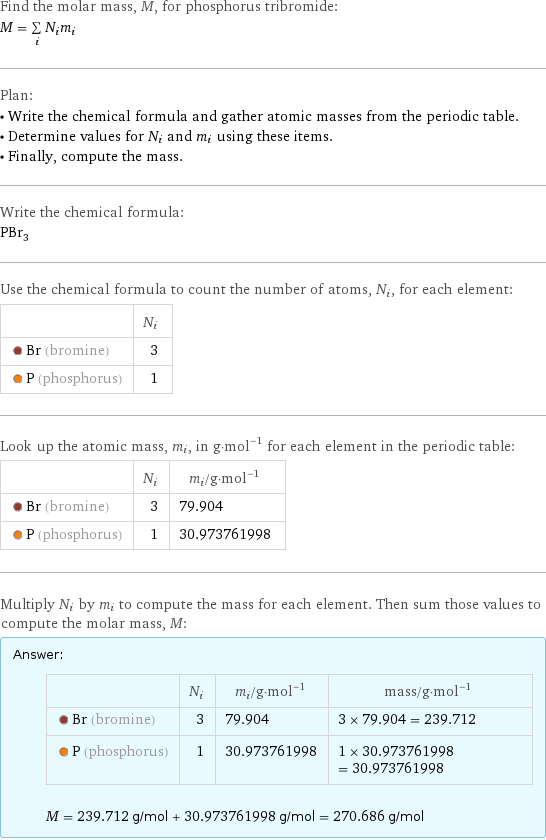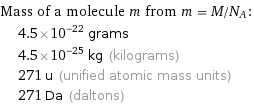Input interpretation

phosphorus tribromide | molar mass
Result

Find the molar mass, M, for phosphorus tribromide: M = sum _iN_im_i Plan: • Write the chemical formula and gather atomic masses from the periodic table. • Determine values for N_i and m_i using these items. • Finally, compute the mass. Write the chemical formula: PBr_3 Use the chemical formula to count the number of atoms, N_i, for each element: | N_i Br (bromine) | 3 P (phosphorus) | 1 Look up the atomic mass, m_i, in g·mol^(-1) for each element in the periodic table: | N_i | m_i/g·mol^(-1) Br (bromine) | 3 | 79.904 P (phosphorus) | 1 | 30.973761998 Multiply N_i by m_i to compute the mass for each element. Then sum those values to compute the molar mass, M: Answer: | | | N_i | m_i/g·mol^(-1) | mass/g·mol^(-1) Br (bromine) | 3 | 79.904 | 3 × 79.904 = 239.712 P (phosphorus) | 1 | 30.973761998 | 1 × 30.973761998 = 30.973761998 M = 239.712 g/mol + 30.973761998 g/mol = 270.686 g/mol
Unit conversion

0.27069 kg/mol (kilograms per mole)
Comparisons

≈ 0.38 × molar mass of fullerene ( ≈ 721 g/mol )

≈ 1.4 × molar mass of caffeine ( ≈ 194 g/mol )

≈ 4.6 × molar mass of sodium chloride ( ≈ 58 g/mol )
Corresponding quantities

Mass of a molecule m from m = M/N_A: | 4.5×10^-22 grams | 4.5×10^-25 kg (kilograms) | 271 u (unified atomic mass units) | 271 Da (daltons)

Relative molecular mass M_r from M_r = M_u/M: | 271